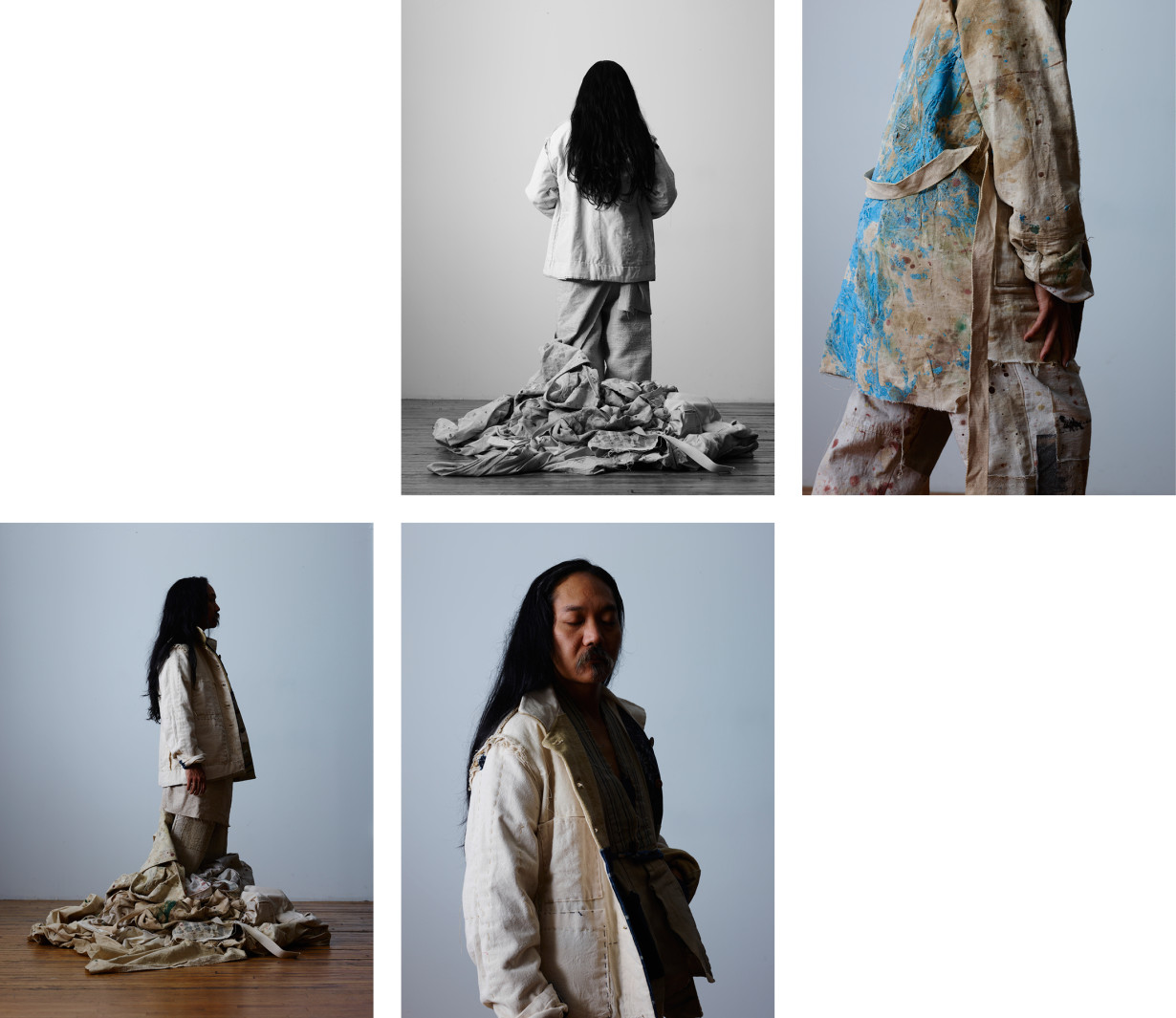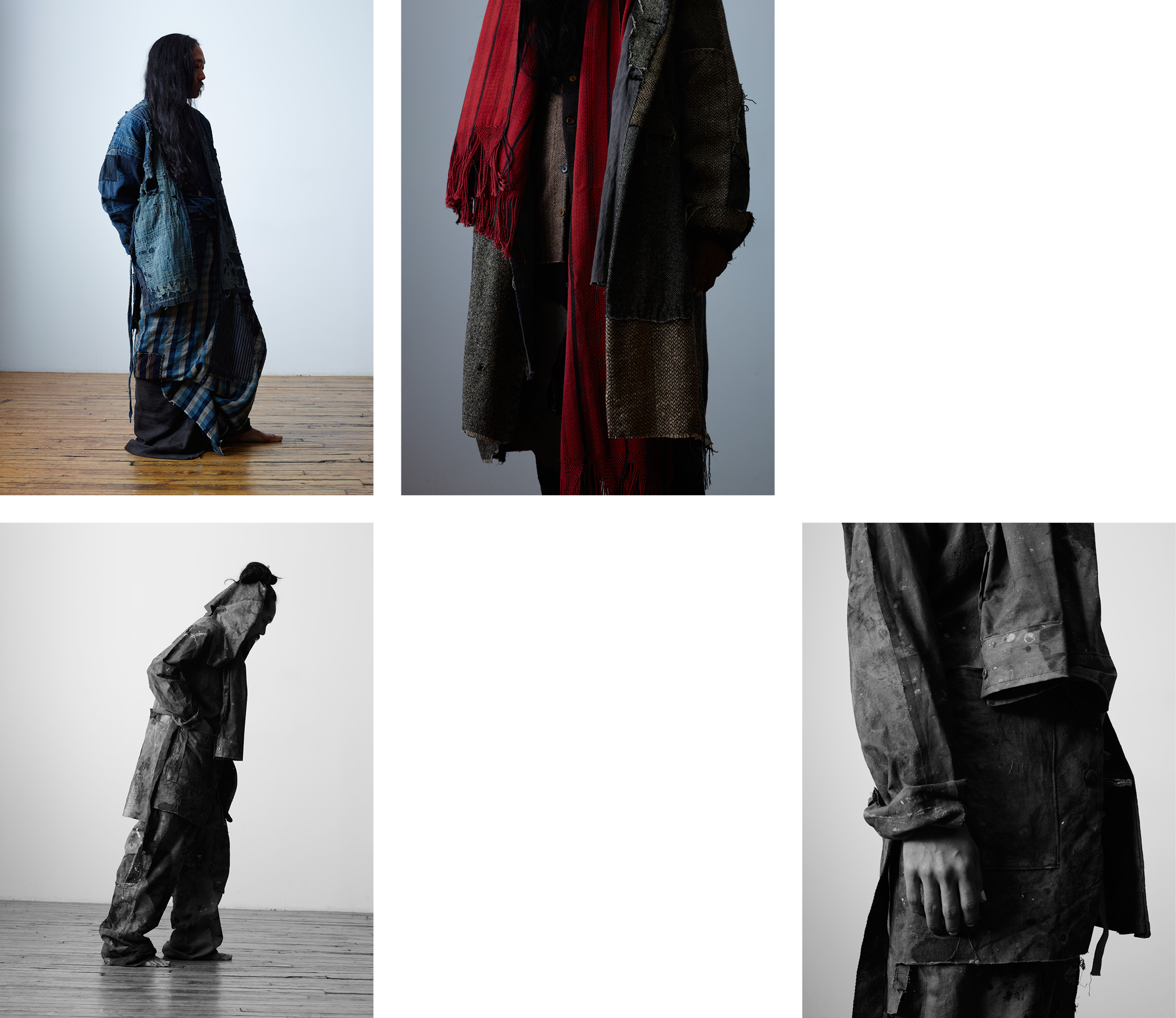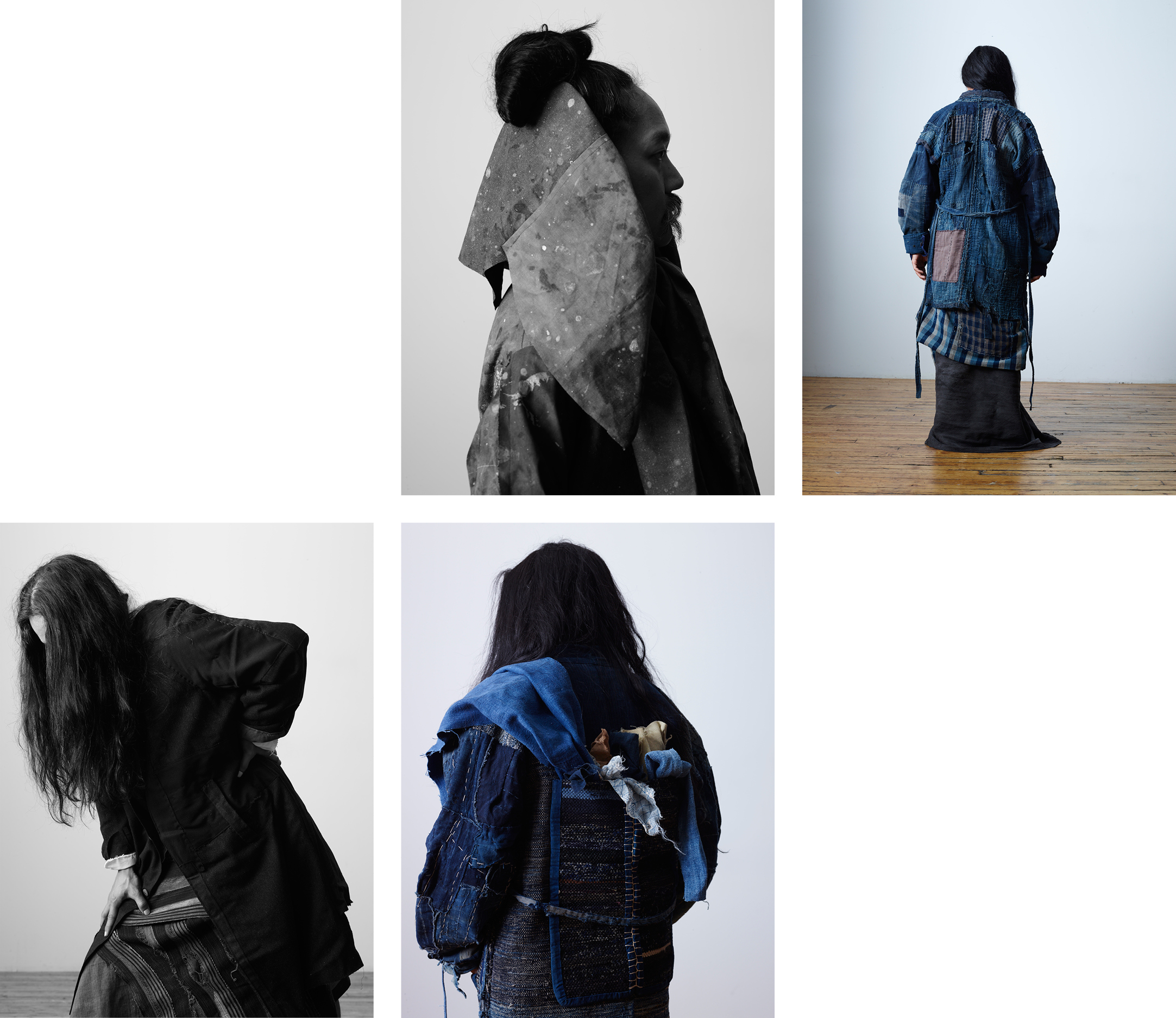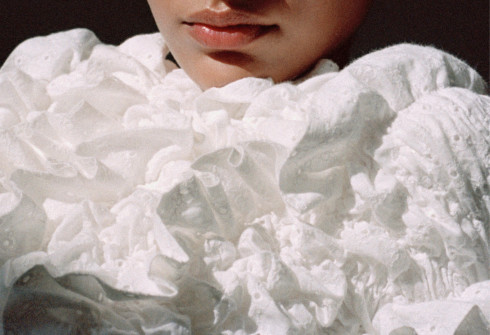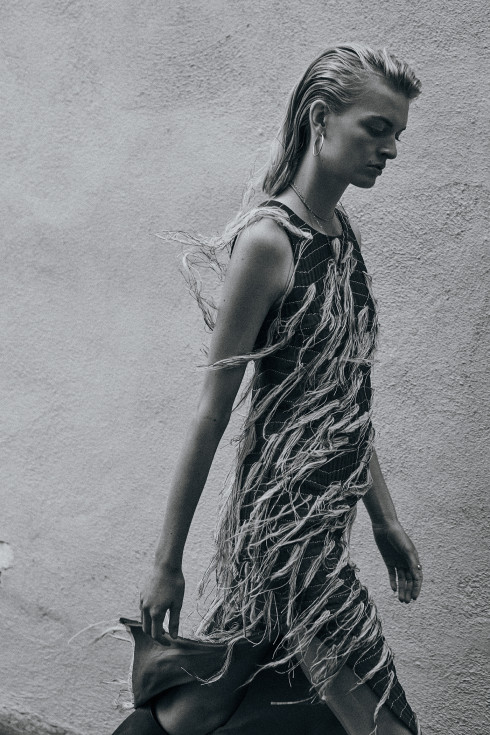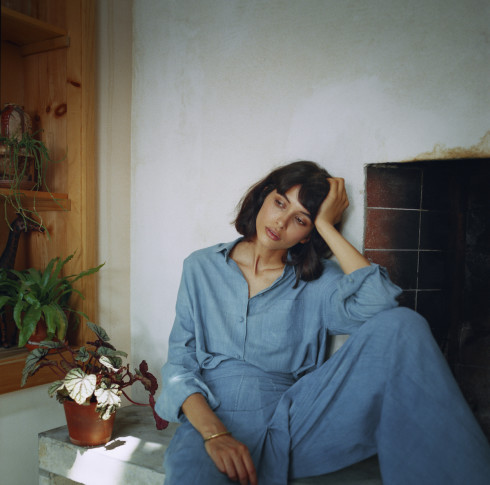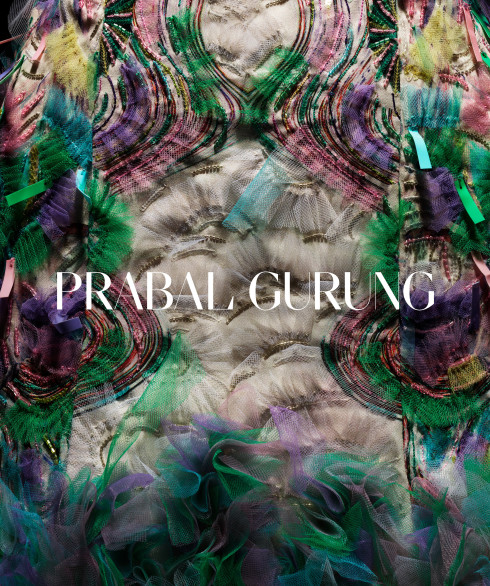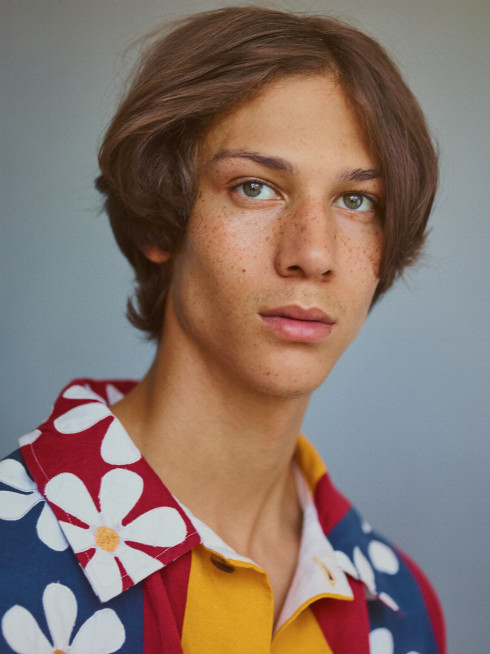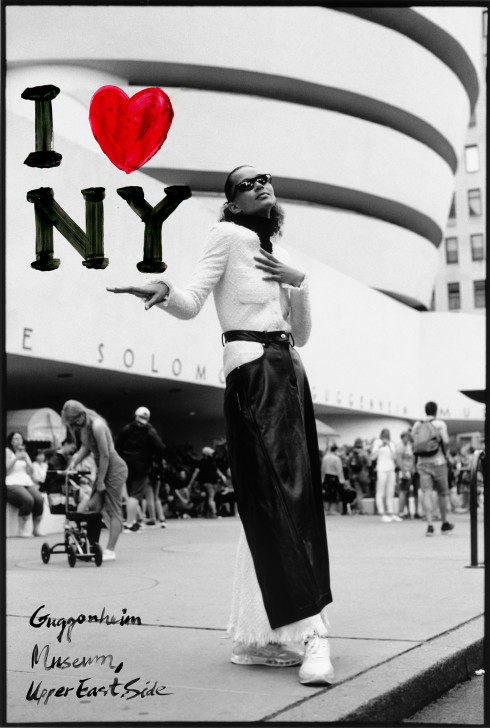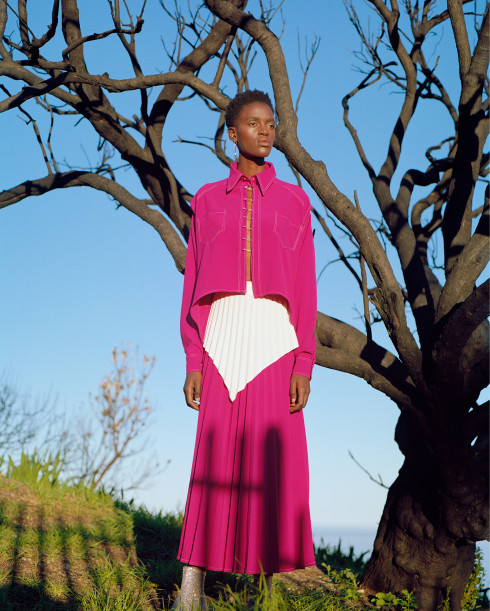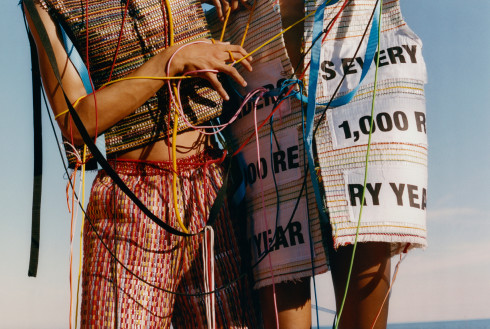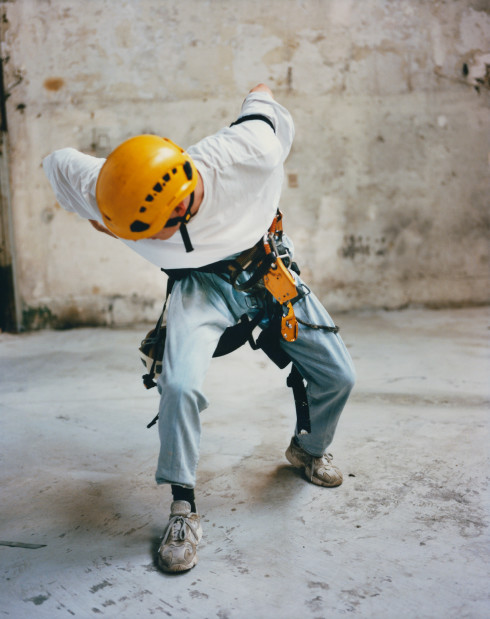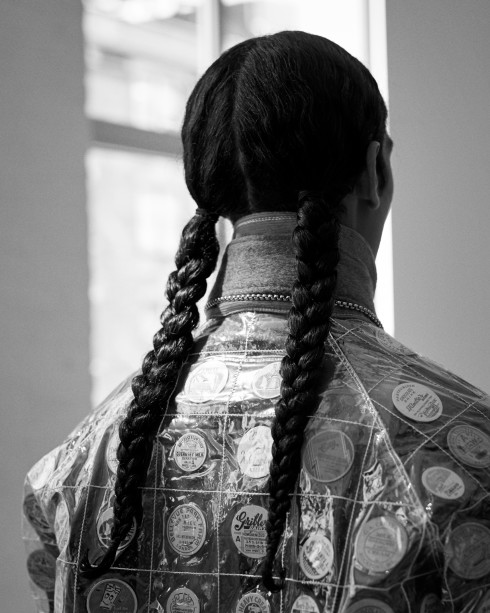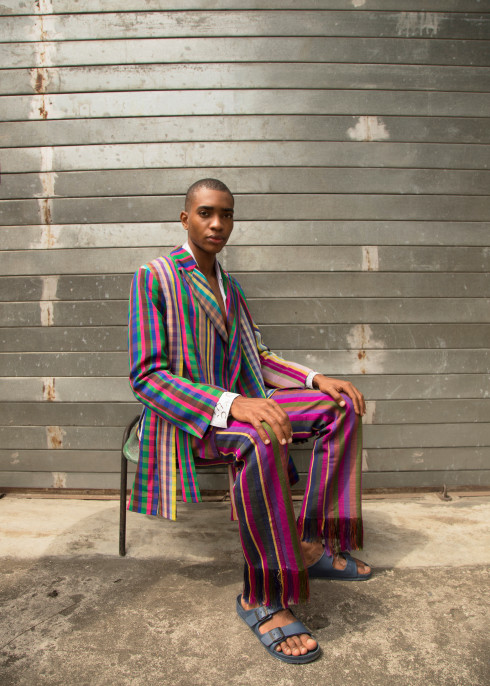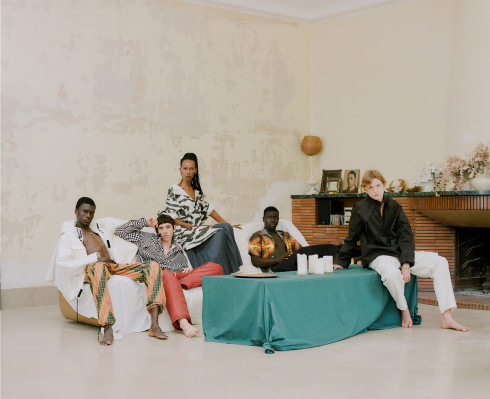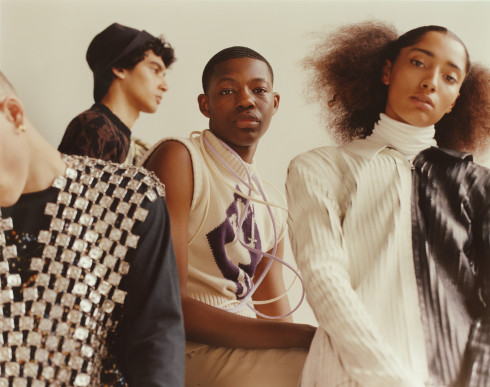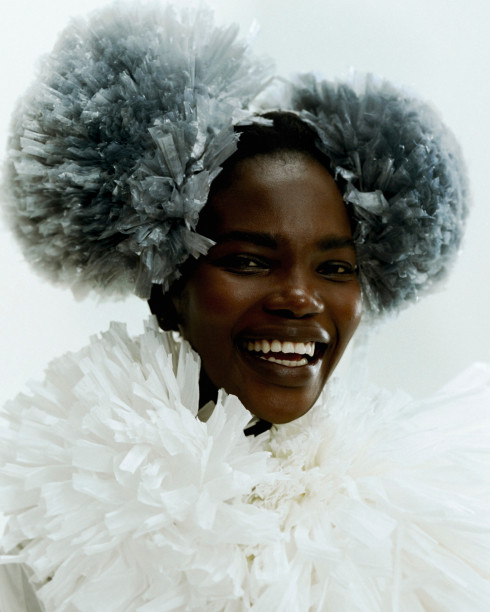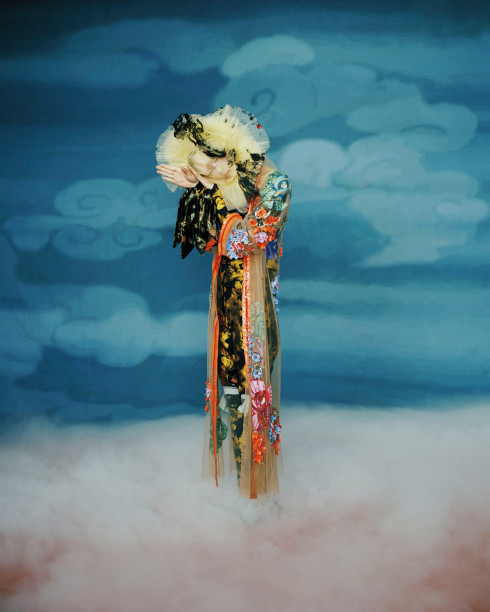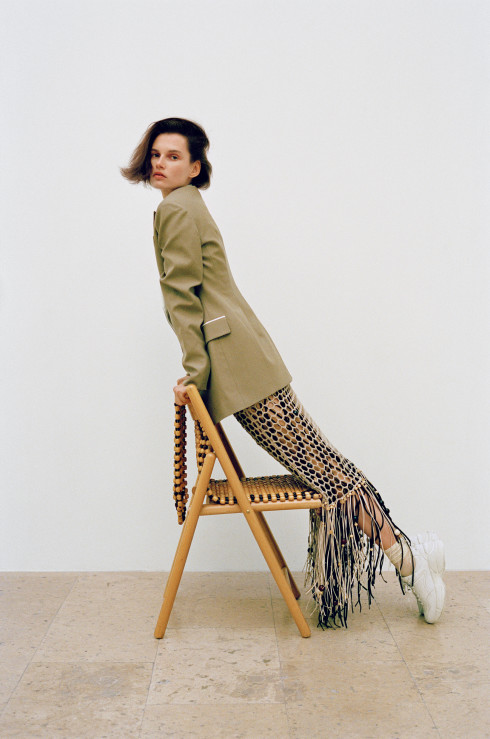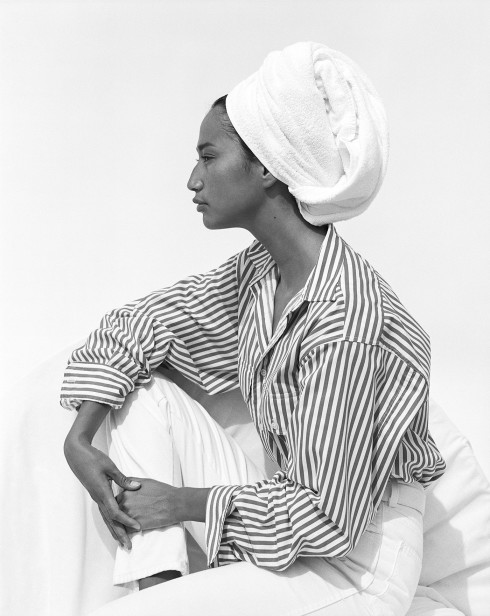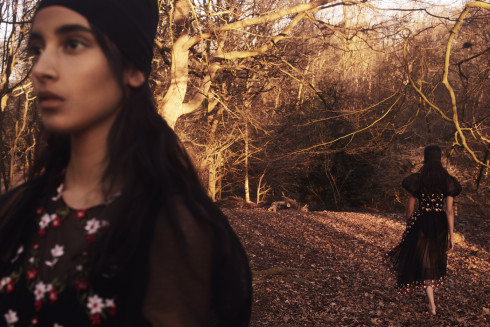- By
- Jonathan Shia
- Photography by
- Nicholas Alan Cope
Styling by Britt Berger. Model: Steve Nishimoto. Photographer’s assistant: Allison Lippy. Casting by Arielle Berman. Digital technician: Jane Gaspar.
RARE WEAVES
There are many fashion designers to whom the term artist could be applied, but Hartley Goldstein Jr. of Rare Weaves is the uncommon one to find success while maintaining the focus on his creativity over commerce. As the creator of unique, handmade garments repurposed from vintage fabrics, he has found loyal—and early—customers in street-style notables like Nick Wooster and Tommy Ton thanks to a meticulous dedication to craft, process, æsthetics, and concept. “I see clothes as a means of expression primarily, and I think that’s a pretty radical idea,” he says. “Once you give over to that idea, then you can appreciate why a piece of clothing can be an art object or can do more than just serve some sort of practical function. Even though on the surface it can seem obvious, I think that for most people that can be an intimidating idea.”
A New York native, Goldstein first became interested in vintage clothing through his mother, a collector who would often bring him along on her hunting expeditions. “She would buy and collect random art, antiques, objects, and I would always see these textiles that were very interesting and that opened the door to my curiosity,” he recalls. “From that, I started buying a lot of really specific garments that were borderline unwearable because I thought they were interesting.”
He quickly amassed a wide-ranging and impressive vintage collection of his own, but it wasn’t until after several years working in the music business—where he was, he says, “a cog in a creative industry”—that he decided to try his own hand at creating clothing as a means of release. “I had all this stuff in me that wasn’t really being expressed,” he explains, “and it got to the point where I got so comfortable that there was a breaking point where I was like, What am I doing with my life?”
Rare Weaves began as a personal project, and in many ways it remains one to this day. Goldstein’s customers, for example, are mostly introduced through word of mouth, and they come to his apartment (which doubles as his appointment-only showroom) to see his one-of-a-kind creations. The point is not, he says, just to sell, which is exactly why he has avoided traditional retail formats and refuses to create size runs of his designs. “I see Rare Weaves more like a conceptual project that’s inspired by fabric, but it’s not necessarily about clothes,” he explains.
Listening to Goldstein talk about his pieces, it’s clear that Rare Weaves is a forum for investigation and experimentation. One of his earliest designs, a band-collar oxford shirt, took its patchwork pattern from a Gee’s Bend quilt that he particularly cherishes. An intricate coat applies the traditional Japanese boro technique to sturdy wool and tweed.
Without being locked into fashion’s usual seasonal calendar and with no wholesale accounts to worry about, Goldstein is free to burrow into whatever catches his eye at the moment, whether it’s early-twentieth-century linen or the full sleeves of a kimono. “I think the clothes transcend a certain level of trendiness that I really, for lack of a better word, despise about the fashion industry. Everything is so, What is it this season? What is it right now?” he explains. “I don’t view clothing like that. I’m pretty consistent in what I love and what I’m really drawn to about clothes, so I don’t think people necessarily operate like that.”
Nonetheless, Goldstein says he does value the importance of social media in helping him share his vision with others, and his voice stands out in a sea of brand accounts and sponsored posts for its genuine passion, something larger corporations cannot fake. “Luckily at that time, Instagram came about,” he says of the beginning of Rare Weaves, “and for an oddly homegrown and analog idea, it was key in a number of ways in letting me tell the story the way I wanted to tell it. I could post what I wanted to post and I could frame it and reach people and I could even see if anyone cared about this. When I saw that they did, it fed me and continues to now. Sometimes I see garments that aren’t made by me hashtagged #rareweaves.”
As someone who has been embraced by some key fashion insiders, Goldstein says he remains vigilant while navigating the industry. He prefers not to lend his pieces for traditional fashion editorials, but he is an open and willing participant with the right collaborators. He has had capsule installations at United Arrows in Tokyo and the now-closed Carson Street Clothiers in New York, and did an event at Green Fingers on the Lower East Side with plant masks by artist Satoshi Kawamoto. A photography book featuring his clothing on scarecrows is in the works.
But Goldstein is far from dictatorial about his designs. “I do my best to explain each concept,” he says, “but art is overly intellectualized as it is, and I’m not against you looking at the shirt and if you don’t care about quilting, but you love the shirt, that’s fine. Maybe ten years later you’ll see a quilt and it will all connect for you. It’s precious stuff, but I’m not overly precious about it.”
A third-generation Manhattanite, Goldstein continues to take inspiration from the variety of the city around him, and it feels as if his goal is to help add to and encourage it. “I’m not suggesting this as a solution to how clothes should be sold, but I think that, at least in a city like New York, there needs to be room for eccentric people who are expressing, creating, and doing something on their own terms,” he says. “I don’t see enough of that, and in a way, that’s always what Rare Weaves is.”
- By
- Jonathan Shia
- Photography by
- Nicholas Alan Cope
Styling by Britt Berger. Model: Steve Nishimoto. Photographer’s assistant: Allison Lippy. Casting by Arielle Berman. Digital technician: Jane Gaspar.
